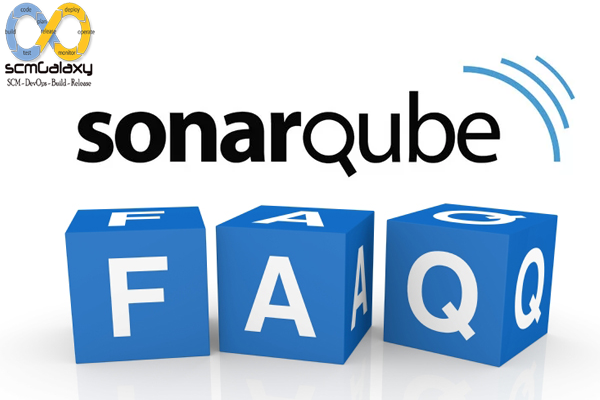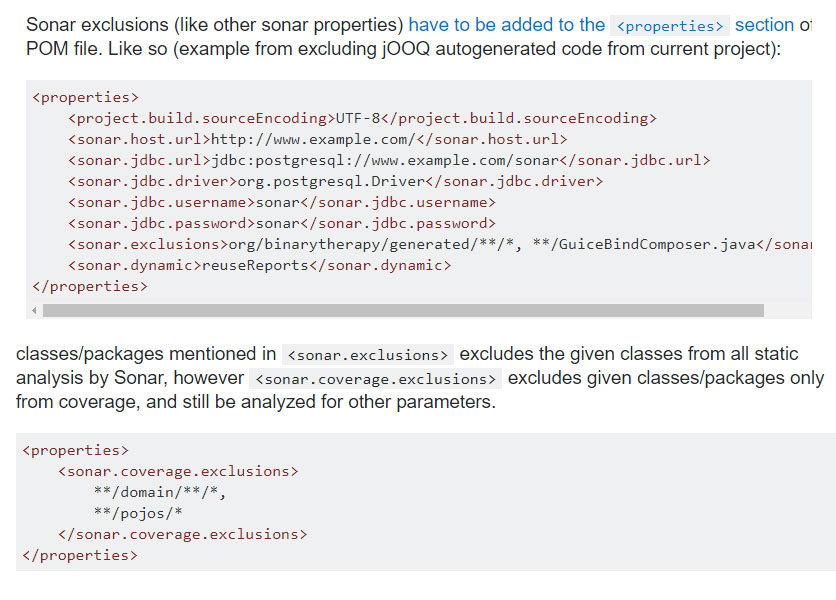
1. What is SonarQube?
A. A coding tool
B. A testing tool
C. A code analysis tool
D. A project management tool
Answer: C
2. What language(s) does SonarQube support?
A. Java
B. Python
C. PHP
D. All of the above
Answer: D
3. What plugins can you install in SonarQube?
A. Cobertura
B. PMD
C. FindBugs
D. All of the above
Answer: D
4. What is a plugin in SonarQube?
A. A collection of rules and metrics for code analysis
B. A tool to manage users and permissions in SonarQube
C. A module to integrate SonarQube with your code repository
D. A visualization tool for code coverage reports
Answer: A
5. What types of issues can SonarQube find and report?
A. Security vulnerabilities
B. Code smells
C. Bugs
D. All of the above
Answer: D
6. What is a code smell in SonarQube?
A. A violation of good coding practices
B. A security vulnerability
C. A bug in the code
D. A performance bottleneck
Answer: A
7. How does SonarQube calculate code coverage?
A. By measuring the number of lines of code executed during testing
B. By measuring the number of test cases written
C. By analyzing the code and reporting on the percentage of code coverage
D. By measuring the number of bugs discovered during testing
Answer: C
8. What is the purpose of a quality gate in SonarQube?
A. To set the quality standards for a project
B. To track the progress of a project
C. To verify that a project meets certain quality criteria
D. To generate reports on a project’s code quality
Answer: C
9. Can SonarQube integrate with Jenkins?
A. Yes
B. No
Answer: A
10. What is the purpose of the SonarLint plugin?
A. To perform code analysis in an IDE
B. To generate reports on code coverage
C. To manage users and permissions in SonarQube
D. To visualize code quality reports
Answer: A
11. Can SonarQube analyze code written in C++?
A. Yes
B. No
Answer: A
12. What is the purpose of the SonarQube Runner?
A. To install SonarQube on a server
B. To perform code analysis on a project
C. To manage plugins in SonarQube
D. To configure quality gates in SonarQube
Answer: B
13. What is the purpose of the SonarQube web dashboard?
A. To configure the SonarQube server
B. To display project metrics and code quality reports
C. To manage user permissions in SonarQube
D. To generate code coverage reports
Answer: B
14. Can SonarQube analyze code written in Ruby?
A. Yes
B. No
Answer: A
15. What is the purpose of the SonarQube Scanner?
A. To generate code coverage reports
B. To visualize code quality reports
C. To perform code analysis on a project
D. To manage plugins in SonarQube
Answer: C
16. Can SonarQube integrate with Git?
A. Yes
B. No
Answer: A
17. What is the purpose of the SonarQube API?
A. To configure the SonarQube server
B. To perform code analysis on a project
C. To manage user permissions in SonarQube
D. To integrate SonarQube with external systems
Answer: D
18. Can SonarQube analyze code written in .NET languages such as C# and VB.NET?
A. Yes
B. No
Answer: A
19. What is the purpose of the SonarQube Issues report?
A. To display all issues found during code analysis
B. To track the progress of a project
C. To manage user permissions in SonarQube
D. To configure quality gates in SonarQube
Answer: A
20. Can SonarQube analyze code written in JavaScript?
A. Yes
B. No
Answer: A
21. What is the purpose of the SonarQube portfolio management plugin?
A. To manage users and permissions in SonarQube
B. To track the progress of multiple projects
C. To visualize code quality reports
D. To generate code coverage reports
Answer: B
22. Can SonarQube analyze code written in Swift?
A. Yes
B. No
Answer: A
23. What is the purpose of the SonarQube token authentication plugin?
A. To manage users and permissions in SonarQube
B. To configure quality gates in SonarQube
C. To integrate SonarQube with external systems
D. To perform code analysis on a project
Answer: A
24. Can SonarQube integrate with GitHub?
A. Yes
B. No
Answer: A
25. What is the purpose of the SonarQube Measurer plugin?
A. To perform code analysis on a project
B. To track the progress of a project
C. To generate code coverage reports
D. To visualize code quality reports
Answer: C
26. Can SonarQube analyze code written in TypeScript?
A. Yes
B. No
Answer: A
27. What is the purpose of the SonarQube CI/CD plugin?
A. To generate reports on code coverage
B. To configure quality gates in SonarQube
C. To perform code analysis in a CI/CD pipeline
D. To manage users and permissions in SonarQube
Answer: C
28. Can SonarQube integrate with Jenkins Pipeline?
A. Yes
B. No
Answer: A
29. What is the purpose of the SonarQube Quality model plugin?
A. To manage users and permissions in SonarQube
B. To configure quality gates in SonarQube
C. To track the progress of a project
D. To perform code analysis on a project
Answer: B
30. Can SonarQube analyze code written in Kotlin?
A. Yes
B. No
Answer: A
31. What is the purpose of the SonarQube LDAP plugin?
A. To manage users and permissions in SonarQube
B. To track the progress of a project
C. To perform code analysis on a project
D. To generate code coverage reports
Answer: A
32. Can SonarQube integrate with Azure DevOps?
A. Yes
B. No
Answer: A
33. What is the purpose of the SonarQube Java plugin?
A. To perform code analysis on Java projects
B. To visualize code quality reports
C. To generate code coverage reports
D. To perform code analysis on Python projects
Answer: A
34. Can SonarQube analyze code written in Scala?
A. Yes
B. No
Answer: A
35. What is the purpose of the SonarQube Squid plugin?
A. To perform code analysis on a project
B. To generate code coverage reports
C. To visualize code quality reports
D. To manage users and permissions in SonarQube
Answer: A
36. Can SonarQube integrate with Bitbucket?
A. Yes
B. No
Answer: A
37. What is the purpose of the SonarQube XPath plugin?
A. To perform code analysis on a project
B. To generate code coverage reports
C. To manage users and permissions in SonarQube
D. To visualize code quality reports
Answer: A
38. Can SonarQube analyze code written in Go?
A. Yes
B. No
Answer: A
39. What is the purpose of the SonarQube Jenkins plugin?
A. To configure quality gates in SonarQube
B. To manage users and permissions in SonarQube
C. To integrate SonarQube with Jenkins
D. To perform code analysis on a project
Answer: C
40. Can SonarQube analyze code written in Rust?
A. Yes
B. No
Answer: A
41. What is the purpose of the SonarQube Checkstyle plugin?
A. To track the progress of a project
B. To perform code analysis on a project
C. To generate code coverage reports
D. To manage users and permissions in SonarQube
Answer: B
42. Can SonarQube integrate with GitLab?
A. Yes
B. No
Answer: A
43. What is the purpose of the SonarQube JUnit plugin?
A. To manage users and permissions in SonarQube
B. To generate code coverage reports
C. To perform code analysis on a project
D. To track the progress of a project
Answer: B
44. Can SonarQube analyze code written in Groovy?
A. Yes
B. No
Answer: A
45. What is the purpose of the SonarQube Fortify plugin?
A. To perform code analysis on a project
B. To generate code coverage reports
C. To manage users and permissions in SonarQube
D. To visualize code quality reports
Answer: A
46. Can SonarQube integrate with TFS?
A. Yes
B. No
Answer: A
47. What is the purpose of the SonarQube SwiftLint plugin?
A. To perform code analysis on Swift projects
B. To manage users and permissions in SonarQube
C. To visualize code quality reports
D. To generate code coverage reports
Answer: A
48. Can SonarQube analyze code written in Objective-C?
A. Yes
B. No
Answer: A
49. What is the purpose of the SonarQube JIRA plugin?
A. To manage users and permissions in SonarQube
B. To configure quality gates in SonarQube
C. To integrate SonarQube with JIRA
D. To perform code analysis on a project
Answer: C
50. Can SonarQube integrate with Azure Pipelines?
A. Yes
B. No






